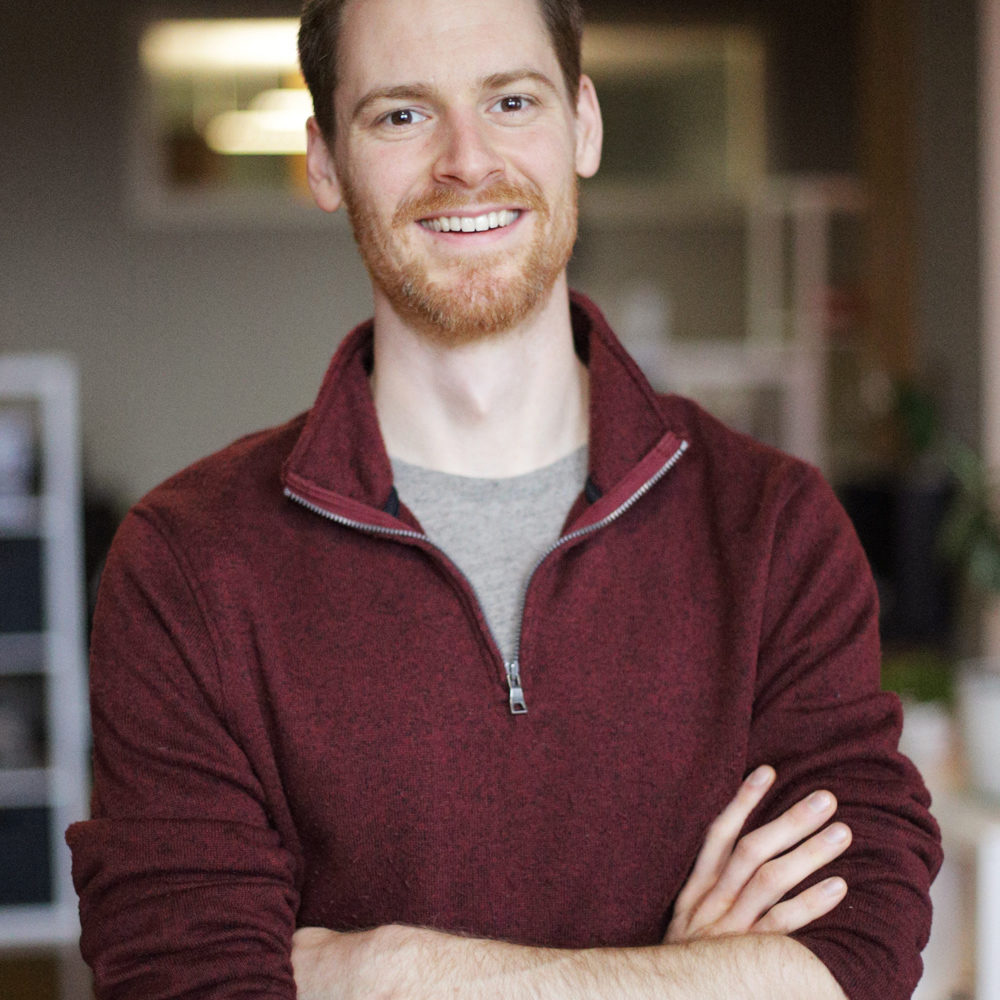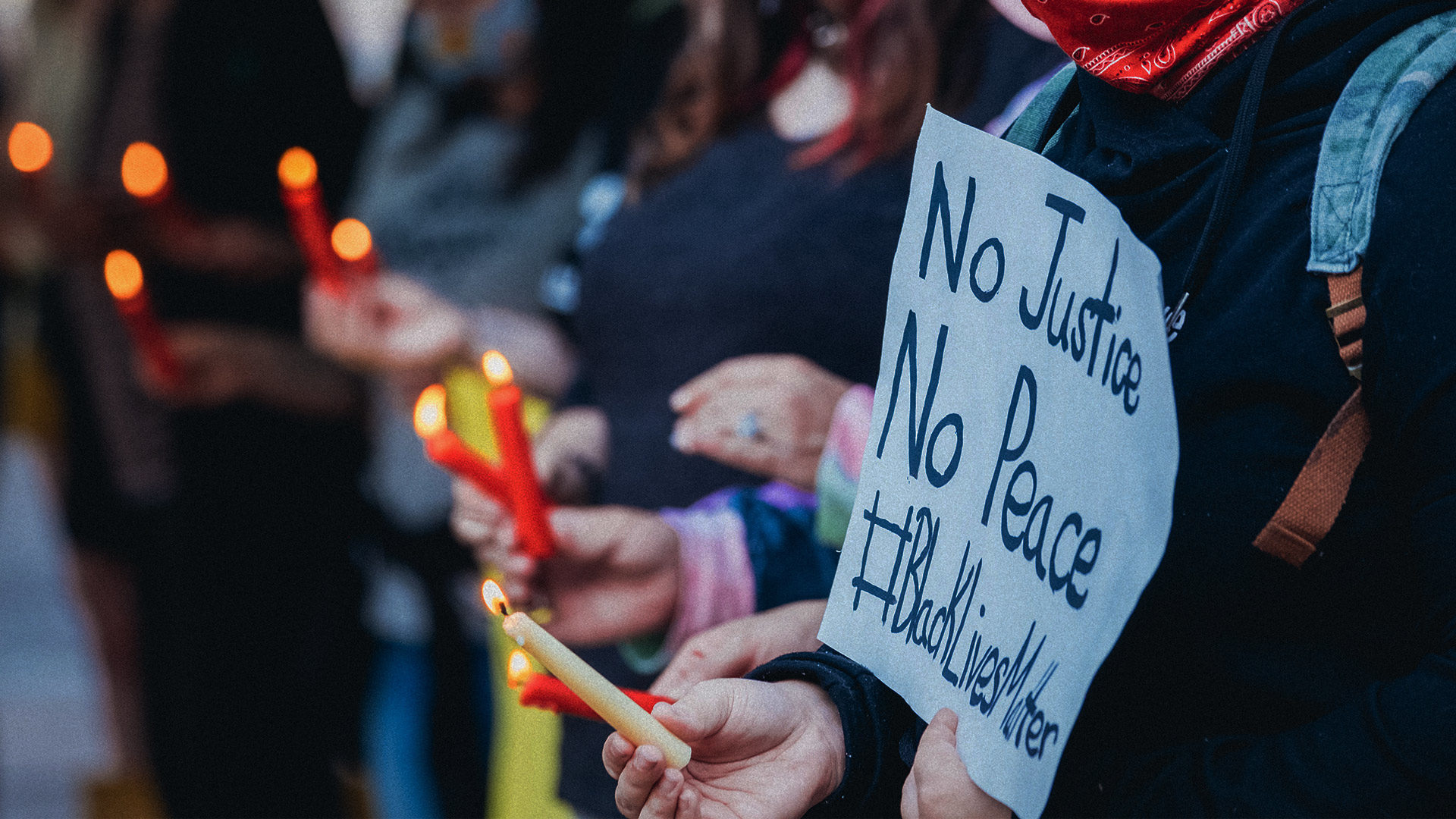We say their names, lingering as we light a candle for each of them on the vigil altar:
Ahmaud Arbery.
Breonna Taylor.
Tony McDade.
Maurice Gordon.
Rayshard Brooks.
George Floyd.
Our altar grows all-too-crowded, even if we say names from just the years since Black Lives Matter was founded. All fellow people, Americans, neighbors, friends, family, children of God. All murdered by police. And all unwillingly martyred in the struggle against one of our nation’s original sins. Centuries worth of countless candles.
George Floyd.
Before moving to Seattle, I lived three blocks from where George was killed in Minneapolis.
When I heard, I joined my community from afar in anger, laying awake at night burning with it. 2,000 miles away, they took it onto the streets, soon joined by my community in Seattle and communities around the world in a sweeping, cleansing wildfire of global grief and outrage. A few people literally burned with their own fury – saboteurs with flames, police with tear gas. But our communities swiftly drowned out these acts of violence with acts of peace – civil disobedience, public meetings, policy proposals, neighborhood clean-ups.
We White folk can count on the Black community’s righteous anger remaining, as they try to prevent another trigger-finger taking of Black life by someone hired to protect and serve them. But can we White folk count on our own anger to stay kindled? As other stories overtake the headlines again, it is all too easy for us to let the fires of indignation snuff out. How do we sustain the anger that racial justice requires?
In the words of Civil Rights leader and long-time member of Congress, Rep. John Lewis, we now have to ignite our pilot lights. He says, in his epic chronicle of the Civil Rights movement Walking with the Wind:
“People who are like fireworks, popping off right and left with lots of sound and sizzle, can capture a crowd, capture a lot of attention for a time, but I always have to ask, where will they be at the end? Some battles are long and hard, and you have to have staying power. Firecrackers go off in a flash, then leave nothing but ashes. I prefer a pilot light — the flame is nothing flashy, but once it is lit, it doesn’t go out. It burns steadily, and it burns forever.”
How do we ignite our pilot lights?
Before the fireworks subside into the smoke of forgetting, we need to remember.
We need to remember that there are many pilot lights already burning brightly in our world. Organizations like Black Lives Matter and Black Visions Collective do much more than huge protests, which are costly actions of last resort. They mostly do the daily grind-work of shifting policy and culture, advancing concrete reform in municipalities nationwide, like those outlined by Campaign Zero and 8 Can’t Wait. Then there are organizations like the NAACP, which has been doing this work for over a century.
We also need to remember other pilot lights of history, luminaries who can light our way now more than ever, reminding us of the continuity in the cause of racial justice. The elders of the Civil Rights Movement in particular have been helping me transmute my anger right now, infusing it with the hope it needs to keep burning. And despite the press that male leaders like John Lewis have gotten, these luminaries, like those who’ve founded the organizations mentioned above, are, of course, mostly Black women.
Septima Clark, “Mother of the Movement:” Co-founder of the Citizenship and Highlander Folk Schools; NAACP and SCLC builder.
Fannie Lou Hamer: Co-founder of the Freedom Democratic Party and National Women’s Political Caucus; SNCC and SCLC builder.
Labor like theirs is too often overshadowed, now as it was then. In part that’s because while men, including anti-racist White men, are busy basking in the center-stage spotlight, these women have been busy actually building the theatre, intentionally eschewing traditions of hierarchy and celebrity. In their words:
Diane Nash: Co-founder of SNCC, the Freedom Riders, and the Alabama and Selma Voting Rights Projects; SCLC and CORE builder:
“My thought about leadership is more task-oriented. Somebody needs to keep up with the money, and account for it. Somebody needs to come into the meeting with an agenda, and to call on people. I think the kind of leadership that has to do with ego and being ordained the leader and staying the leader is deficient. I think movements should be issue-led, not personality-led.”
Ella Baker: Mentor of the Civil Rights Movement, God-Mother of SNCC; NAACP, SCLC, and SCEF builder.:“You didn’t see me on television, you didn’t see news stories about me. The kind of role that I tried to play was to pick up pieces or put together pieces out of which I hoped organization might come. My theory is, strong people don’t need strong leaders.”
Their ethos of building rather than “leading” lives on – the more recently-founded initiatives above like BLM explicitly carry the torch of the Mothers’ legacy. I find my own fire stoked by their emphasis on relationship, democracy, and sustainability, their invocation of our wise women elders. We can and must trust them with, and thank them for, our progress.
We need to remember that with their guidance, we have indeed progressed, and that we can further. But we need to remember too that we have not yet reached what Dr. Martin Luther King, Jr. called the “promised land of racial justice.” In many ways we still struggle now for what they struggled then. They too were saying names and lighting candles on the vigil altar. Ella Baker reminds us:
“Until the killing of black men, black mothers’ sons, becomes as important to the rest of the country as the killing of a white mother’s son, we who believe in freedom cannot rest until this happens.”
“Remember, we are not fighting for the freedom of the Negro alone, but for the freedom of the human spirit, a larger freedom that encompasses all mankind.”
Now, there may be those of us, or others who we know, who though lauding this vision, criticize or misunderstand the means for carrying it out: direct action – protest that is peaceful and also confrontational. There are words to be remembered in this regard as well. And though we must continue to prioritize listening for the voices of Black women, I must now urge you to read the Letter from a Birmingham Jail, which rings as true now as the day Dr. King first wrote it. He challenges all of us white folk, who too often oppose racism from a comfortable distance, to step into the “constructive, nonviolent tension which is necessary for growth” and be “extremists for love.”
So, fellow white folk, what does this look like in practice?
On social media, you might hear about only two modes of action, both fireworks:
1. Getting out in the streets or
2. Getting into a gladiatorial debate or onto a soapbox on social media.
Maybe your flame is still crackling and these seem like the right tactics for you right now. Personally I’ll encourage #1 as long as the builders do.
As far as #2, I believe we need (and want) a reality check on our social media use. What would the Mothers’ say about our vortex culture? I think they’d say something like: if it isn’t building, it isn’t working. We are becoming more politically polarized, and more frustrated with social media as it exacerbates this process. It siphons the time and energy – and damages the relationships – we need to work proactively for justice in the real world. If you’re seeing the ashes of relational slash and burn and scorched earth, if your echo chamber is shrinking or erupting with vitriol, that’s a sign the fireworks need a rest. Time to ignite the pilot lights, including but not limited to:
1. Donating to and learning about the organizations leading racial justice work.
2. Having actual conversations with fellow white folk offline.
Who benefits from our burning bridges? Who benefits from our virtue-signaling? Maybe our egos in the short-term. But in the long-term, we are only stymying the conversations we White folk need to be having with each other about racial justice. So instead, what if we sought exchange and quality over quantity in our conversations? What if we took them offline, calling people on the phone the old-fashioned way, reallocating the hour spent on Facebook diatribes and back-patting to an hour of nonviolent communication? As the Mothers remind us, commitment to relationship is the only proven path to transformation. That’s what moves opinions, then votes, then mountains, and ripples into tidal waves.
3. Doing our soul-work around race and racism.
And the most important relationship on this path is the one we each have with our very own souls. Many fellow white folk are speaking up about this, imploring us to own up to our privilege and silence. But any public demonstration in this regard is meaningless if we aren’t doing the private legwork that truly transformative activism requires. Yes, reading is another outlet for growing in awareness. But this too is meaningless if we don’t let awareness steep in our hearts.
We need to journal and pray and wander in the wilderness with the hard truths and questions. And yes, we must own our consistent failures and the consistent failures of white Western monoculture. But we must also own a vision for something better, in ourselves and in the world. Indeed, singing about salvation will draw in countless more people than just sermonizing about sin.
So let us imagine: What might that elusive “promised land of racial justice” and “larger freedom” look like? What healing and wholeness do our White folk souls have to gain there? Is there anything of ourselves and our ancestral European/American cultures that can aid us on the journey? These wrestlings will help us engage most constructively in the conversations and action needed to bring more white folk into the struggle. These wrestlings will keep us burning and in reciprocal relationship with BIPOC folk.
Lastly, we need to remember to keep saying the names of our fellow children of God, and keep the candles lit.
When the Vietnam War Memorial was installed in Washington, DC, it was proposed that politicians should meet there every time a declaration of war was on the table, and be forced to read aloud the 58,000 names etched into its polished black walls. Their wailing alone would prevent them from sending another mother’s child to die.
So it goes with the names of the Mothers’ children at our vigil altar – the memorial dedicated to the preservation of Black life, to the struggle for racial justice. May we continue to say their names, until politicians and police and protesters alike lay weapons down and wail together. Indeed, our anger is doomed to ashes if we do not also embrace sorrow.
Ahmaud Arbery.
Breonna Taylor.
Tony McDade.
Maurice Gordon.
Rayshard Brooks.
George Floyd.
May we keep bringing our pilot lights back to their candles.


